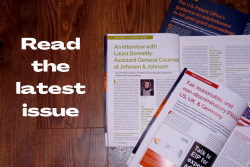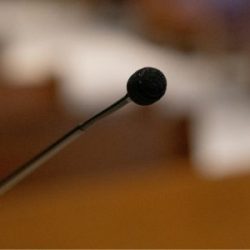 Earlier this month, software company Blackberry announced it was selling its non-core (those relating to mobile devices and wireless networking) patent portfolio to Catapult IP Innovations Inc. for $600 million. While the patents included in the portfolio don’t relate to Blackberry’s current core business, they operate in the mobile communications sector, which is likely the most litigation-intensive technology area in the patent system in the last few years. It can therefore be assumed that there will be a corresponding increase in exploitation through licensing efforts and related patent infringement proceedings.
Earlier this month, software company Blackberry announced it was selling its non-core (those relating to mobile devices and wireless networking) patent portfolio to Catapult IP Innovations Inc. for $600 million. While the patents included in the portfolio don’t relate to Blackberry’s current core business, they operate in the mobile communications sector, which is likely the most litigation-intensive technology area in the patent system in the last few years. It can therefore be assumed that there will be a corresponding increase in exploitation through licensing efforts and related patent infringement proceedings.
As in previous years, extensive patent pools of mobile phone companies in particular offer investment opportunities for large fund companies. This allows companies to generate returns from their research & development (R&D) investments even after the products in question are no longer available on the market or a product area is completely abandoned, as in the case for Blackberry. However, this form of exploitation is not without controversy.
Potential users of patents sold and exploited in this way are particularly critical of the fact that they now see themselves exposed to a change in risk and a potential increased likelihood of legal action. While in a patent dispute between competitors there are usually extensive negotiation options due to mutual dependencies, pure patent investors have an exclusive interest in the economic exploitation of the acquired property rights through licensing income. Although this may significantly reduce the negotiation options in an infringement dispute, it does not fundamentally contradict the core idea of the patent system. Rather, an IP right exploited in this way is also based on an R&D investment originally made by a company and a developed technological innovation. As a result of its innovative strength, at least part of the exploitation success also flows back to this company in the form of the sales price of its patents.
While this development could be viewed critically by potential users of the protected technology, such investments can also be seen as a further strengthening of the patent system. From the point of view of a selling company, investments in development and innovation can contribute economically even if market success is not achievable in other areas, such as manufacturing effort, market share, marketing effort, etc. In other words, by adopting a proactive protection strategy at an early stage of development work, a company can create economic security for its investments. In fact, one of the original purposes of the patent system was to provide such protection for research investments. For this economic protection, it is now possible to make use of the ‘exploitation service’ of the investment companies, so to speak, without having to take legal action of one’s own.
The general concept of patent protection is based on an exchange between the state and the company. In return for publishing a technical solution as part of the patent application, the company receives a time-limited monopoly for commercial exploitation. Access to this monopoly is limited by the grant requirements, and automatic publication serves to accelerate technical development by spurring other companies to develop better solutions. The use of sold patents by patent exploiters does not change this core concept. Rather, it similarly encourages all market participants to actively invest in innovation themselves, thereby advancing the technology.
It can even be argued that the possibility of selling a patent to an investor means that other companies must in principle take its protective effect more seriously than before, since soft factors – such as mutual dependencies or a strong imbalance in the economic power of the two parties – no longer play a role as a result of the possibility of sale. With this view, the development of the exploitation opportunity through asset deals (such as the recent Blackberry example) can also be considered a positive addition to the patent system, as it secures the investments of companies to a further extent.
Following the preceding argument, the fact that company patents are considered as independent assets actually strengthens the value of the patent system and the individual property rights. This applies in particular to small and medium-sized enterprises, which have so far been exposed to a vast imbalance of power as patent owners against large corporations in patent disputes. If the current high volume patent sales, which receive much media attention, are still in the majority, this concept also seems to be transferable to smaller scopes without causing significant issues. Purchases of small patent bundles, individual patents or even the pure investment in an infringement dispute, are also conceivable.
One could therefore summarise that for innovation-driven companies, particularly startups and scaleups, the current development can be viewed positively. However, to the same extent, especially in large companies, an adjustment of the risk assessment for potential infringements of third-party intellectual property rights may be necessary, which includes the possibility of exploitation by sale. The trend towards more active use of the patent system, however, does not seem to contradict the basic idea of increasing the strength of innovation and the speed of its development.
In the interest of balance, a potential problem area from a business and a societal perspective, remains fairness in negotiating the cost of the licence. The much-discussed relationship between user risk (automatic injunction) and patent holder risk (defeat in infringement proceedings/loss of property right) has in fact already led to an adjustment of the law in Germany. I for one am excited to see how patent owners, patent users, the courts and the legislature will respond to future IP asset deals.
Written by: Andreas Wietzke, Partner at Mathys & Squire

| MORE NEWS | | WRITE FOR OUR NEWSLETTER |










